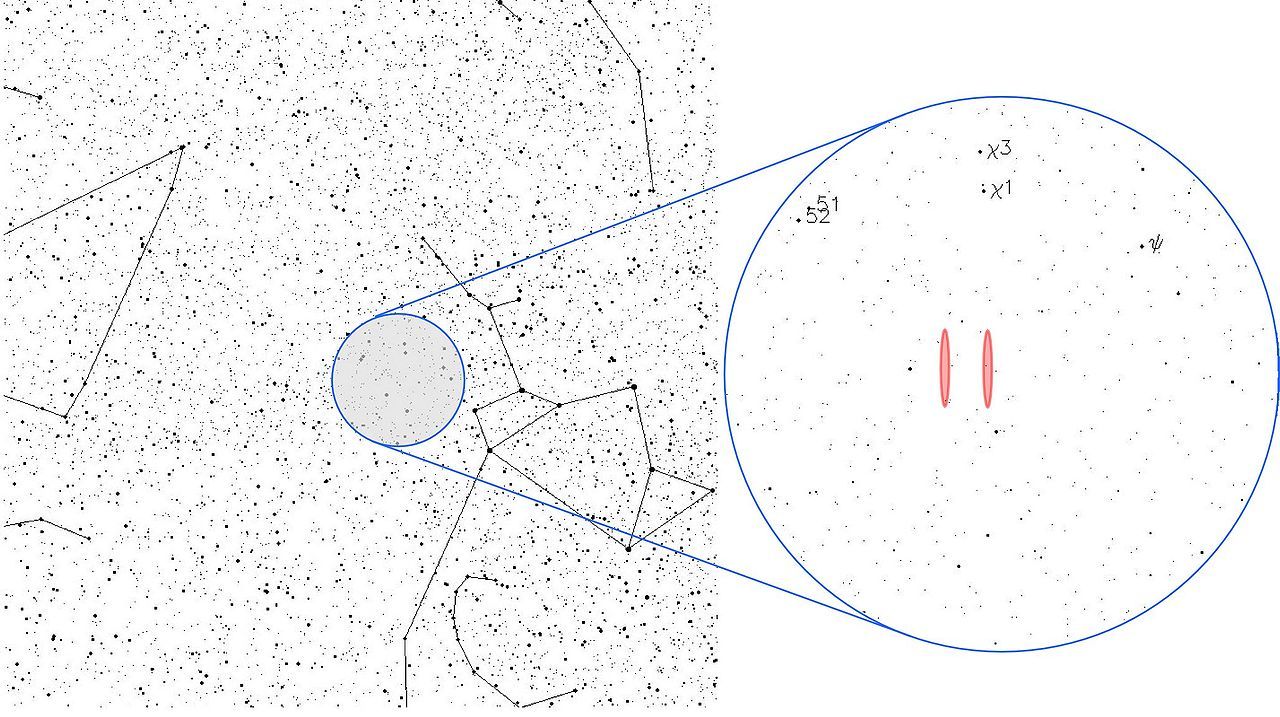 Listing of the characteristics of the radio pulse, received in 1977 with the mark of the astronomer Jerry EichmannThe WOW signal
Listing of the characteristics of the radio pulse, received in 1977 with the mark of the astronomer Jerry EichmannThe WOW signal stirs the minds of scientists and ordinary citizens for many years. It all began on August 15, 1977, when a radio telescope located at an observatory at Ohio State University caught a strange signal. This system worked in the framework of the
SETI program, observing a certain part of the sky. And suddenly the radio telescope registered a very strong signal that came from the constellation Sagittarius. Its duration was only about a minute, and the repeated signal with similar characteristics was not recorded after that.
The radio pulse was so strong that astronomer Jerry Eichmann, who first encountered a similar one, circled the numbers on a piece of paper in red and wrote “Wow!” Next to it. Actually, this was the name for this mysterious impulse. At that time, the search for signs of the existence of an alien mind was carried out only a few years, so many scientists were confident that they were about to face the manifestation of the activities of intelligent beings. It is, of course, about radio signals, other methods of detection simply did not exist (and now this is the main method).
Nevertheless, there were many skeptics who did not consider this impulse artificial. Disputes about the nature of the signal "Wow" went on for many decades, they continue to this day. Some experts believe that there is no mystery here, the signal is definitely of natural nature. One of these scientists is the astronomer Antonio Paris, who has been studying this radio pulse for a long time. In 2016, he, together with his scientific partner Evan Davis,
published a scientific work with the results of his observations and their analysis.
The authors of this document believe that the source of the signals does not lie in another star system, but lies next to us. These are comets moving within the solar system. Why do astronomers think so? The fact is that they managed to register similar signals in the same region where they were spotted in 1977. Scientists
believe that the source is comets 266P / Christensen and P / 2008 Y2 (Gibbs).

Both comets are "wrapped" in hydrogen clouds. And these clouds with a certain combination of factors can reproduce the impulse, which is similar to the very signal. Moreover, at the end of 2016 and the beginning of 2017, scientists directed a telescope to a specified part of the sky and recorded strong radio signals, the nature of which is clearly cometary.
After that, Paris also observed other similar comets with the same hydrogen clouds, finding exactly the same signals. This means that this phenomenon is absolutely not unique; such comets, it seems, can generate many comets surrounded by a cloud of hydrogen.
Perhaps this is not too good news for those who believe in the alien and reasonable origin of the Wow signal. But science is science - it works with facts and objective data. Of course, the scientists hypothesis must be re-checked several times. In the near future, other scientists Paris will take care of this. For more evidence, which will help strengthen the hypothesis, astronomers need extra time to observe. True, the time period needed by scientists was bought by other specialists (radio telescopes are a valuable resource, and you need to reserve time to work with them, and this is not free).
As a result, Paris and colleagues launched a crowdfunding campaign to raise $ 13,000, which is needed to create their own narrowly focused and not too powerful radio telescope. As far as can be understood, the money was collected, because at the time of the passage of the comet 266P / Christensen in the above sky in January of this year, measurements were taken. But that's not all, because Comet 335P / Gibbs will once again be held in the WOW signal recording region on January 7, 2018. So, if you're lucky, astronomers will be able to conduct observations and record the desired signal.
Now
there are skeptics who consider the results of the observation of Paris and the team erroneous. The scientist says that if his point of view turns out to be wrong, all the same, the observations made add a few "coins" to the piggy bank of knowledge about comets.